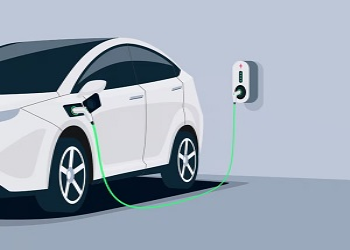Friday, December 16, 2022
By CarKhabri Team

How India Can Achieve Electric Mobility By 2030?
The government of India has targeted to increase the sales of electric vehicles in the country by 2030. For this the government wants private electric cars to capture the EV market by 30%, commercial vehicles to capture 70% EV market, and 80% market by two-wheelers and three-wheelers. This target at first instance sounds difficult to achieve, but going through the increase in the percentage of EV’s share in the market from 0.75% in 2019 to 4% during the first six months of 2022, this trend is expected to increase in the coming months.

Well, there are lots of reasons to support this belief. The most important reason is the declining prices of electric vehicles. The prices of petrol, diesel or CNG vehicles are increasing regularly. According to Union Minister of Road Transport and Highways, Nitin Gadkari, the prices of electric vehicles will come to an end by the next year. For this, the government has already taken a step in this direction by reducing GST on EVs from 12% to 5%. Secondly, the high fuel prices are one reason to shift people towards electric vehicles.
The cost of running an electric vehicle at present is only 1-2 per kilometre, this is one-tenth of the operating cost invested in running petrol and diesel vehicles. Fuel savings is one of the reasons for shifting to electric vehicles, not only in India but in the entire world.
Obstacles To the Growth of Electric Vehicles in India: Apart from the cost and operational cost, the most important reason behind the slow growth of electric vehicles is the range offered by EVs. This situation is further deteriorated by the poor power supply in most states of the country. The absence of sufficient charging infrastructure is also one reason behind the adaptation of electric mobility in the country. To combat this problem, the government is working on developing a strong EV charging infrastructure throughout the country.
After understanding the main reason behind the hesitation for adopting electric vehicles, we should focus on removing this obstacle. At present, it takes long hours for an electric vehicle to charge. On the other side, ICE vehicles are refilled in a few minutes. To get rid of these issues, there are three initiatives on which we need to work on.
- Private Charging Infrasture: Charging an EV at home is always the convenient and economical way to charge an EV. According to a study, 90% of EV buyers prefer to charge their vehicles at home. Charging an EV at a public charging station is not only expensive, but they also aren’t suitable for charging an EV to its fullest capacity due to time constraints. Thus, there is a need to work on improving the supply of power at home.
- An Operating Public Charging Infrastructure: There is a need to improve public charging infrastructure facilities. This can be done by offering them incentives and making them financially strong by offering them subsidies for buying required equipment and offering them land on lease or rent.
- R&D: EV manufacturers need to research and development of new technologies to improve the range of vehicles and the time taken for charging the battery. The fast charging and improved range will help in eliminating the anxiety about the range of these vehicles.
Bottom Line: Instant transition from fuel-based vehicles to electric vehicles is almost not possible, even in the world. All we can do to increase the use of these vehicles is improve the infrastructural facilities and establish a strong collaboration between different government agencies including both central and state governments.



Comments (0)